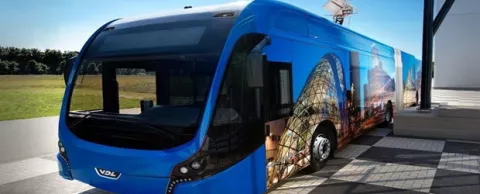
As cities commit to becoming sustainable and livable smart cities, they quickly learn that transportation plays a major role in accomplishing that goal. Populations in many cities are growing and that means more cars and commercial vehicles. The result? More pollution, more traffic congestion and other related headaches — at a time when city dwellers expect clean air and an efficient transportation system that offers convenient, efficient mobility.
Our story below describes Council Associate Partner Transdev's fully electric bus system and how it benefits both residents and the environment. If your city is puzzling over how to mitigate pollution and traffic congestion issues, you may want to consider a similar solution. — Doug Peeples
Transdev recently began operating 43 fully electric buses in the cities of Eindhoven and Helmond in the Dutch province of Brabant, which the company says is the largest zero-emission bus fleet in Europe.
In addition, the buses can carry more passengers than standard buses because the articulated vehicles are significantly longer.
Yes, there were big technical issues to solve... like range
Because the buses Transdev operates in Eindhoven and Helmond are fully electric, one critical challenge was solving the range problem. The buses aren't hybrids with a diesel engine to kick in when the power runs down.
One solution is fast charging technology. When the buses run out of power they can be recharged in half an hour. And in Eindhoven the company converted the bus terminal, a diesel garage, into a charging garage with charging points for each bus. The buses use a pantograph similar to those used by trolleys and streetcars to connect to charging points. The buses also are used on a rotating basis, with some held in reserve against the possibility that a bus will run out of power, and they are all charged in the terminal at night.
Another operating strategy is the buses are targeted for use in specific urban areas where routes are relatively short and air pollution levels are high.
"This is an important step leading to sustainable bus transportation and a glimpse at the future of public transport," said Transdev Netherlands CEO Bart Schmeink. The company will present information and its experiences with the project through its E-bus Living Lab at a Paris convention next year.
For more on urban transportation...
The Transportation chapter of the Smart Cities Readiness Guide offers discussion, insights, case studies and other resources on smart transportation systems. It also offers an explanation of the benefits of smart transportation, ranging from shorter trip times to improved public safety.
Doug Peeples is a Portland, Oregon-based writer specializing in technology and energy. Follow @smartccouncil on Twitter.



